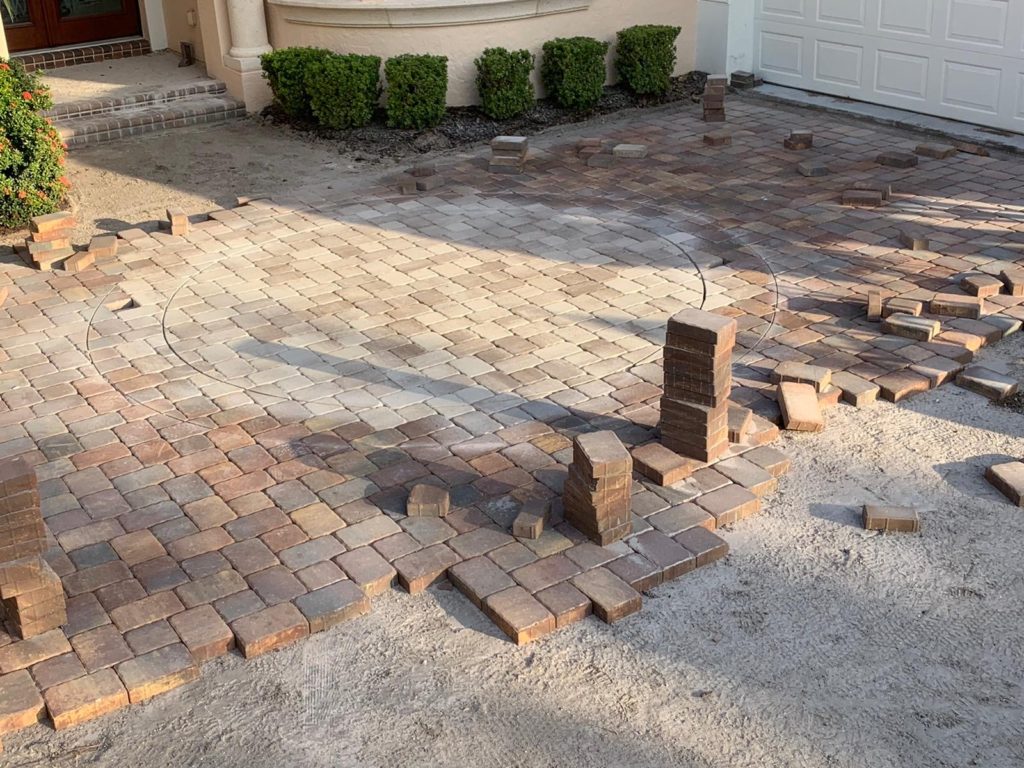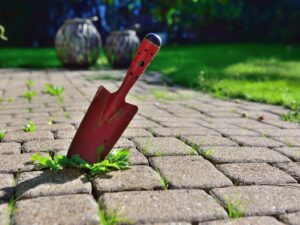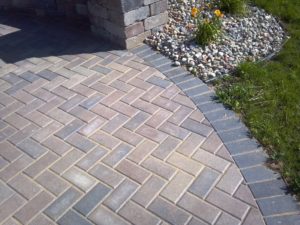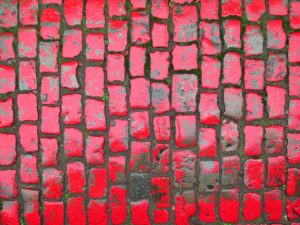Pavers are well known for being very durable, especially for high traffic areas, like driveways. But, how to lay pavers for a driveway? Is it any different from laying pavers for a patio?
Pavers are the best thing for driveway paving, but with so many styles and types to choose from, it can be very intimidating and confusing to even begin looking. The installation process is very similar to a standard pavers installation, except for some little details.
If you are wondering how to lay pavers for a driveway, read more about it below!

How to lay pavers for a driveway?
Before you start your project, the first thing you need is to plan the size of your driveway. A driveway must be large enough to easily park your cars. Generally, the one-way driveway width is enough for those who own only average size cars. A two-way driveway width installation is required for those who own larger vehicles.
Single car driveways can be from 10 to 12 feet, while double car driveways can be between 20 to 24 feet wide, but if you need space for parking two cars, consider the width of 24 feet.
And when it comes to a driveway length, the measure is based on your property’s needs.
Most people plan driveways using 18 to 20 feet of length for each car or 22 to 24 feet for big vehicles.
After you determine the width and the length of your driveway, now you’re gonna need some materials so you can start laying pavers for a driveway. For the installation, you’re gonna need:
- Pavers
- Paver restraints
- Rope
- Strings
- Wooden stakes (to pound on the floor)
- 12” steel spikes
- Gravel
- Sand
- Geotextile fabric
- A carpenter level
- A rubber mallet
- A nice straight lumber
- A straight edge
- A measuring tape
- A plate compactor
- A masonry saw
- Safety equipment
All set with the planning and the materials? Now is the time to lay the pavers.
Step 1: For driveways or any type of surface that needs to hold a lot of weight, prepare the ground by excavating approximately 12 inches into the soil, then compact the soil with a hand tamper to make sure the ground won’t shift in the future.
Step 2: After compacting the soil, lay geotextile fabric to allow the water to pass without disturbing the particles underneath. Geotextile fabric is very effective in heavy traffic areas, like driveways, and highly recommended to prevent soil movement beneath the pavers surface and increase the durability of the pavers system.
Step 3: Lay 6 inches of gravel on top of the compacted soil. In this step, you can adjust the height of the finished project and to ensure you don’t have any dips or bumps. If necessary, slightly increase or decrease the thickness of the gravel base.
Step 4: Install the edge restraints and place them around the perimeter of the project and then secure them into the ground with 12″ spikes. If your driveway design is irregularly shaped, you can cut the restraints in order to follow the edges of your design.
Step 5: On the top of the gravel base, lay approximately 4 inches of clean sand. The sand is the material that holds your pavers in place. Level the sand carefully with a straight board and compact it with a hand tamper.
Step 6: Lay the pavers straight down in the sand and then slide each paver straight down the edge of the adjacent paver according to the design pattern of choice. If necessary, cut some pavers to fit.
Step 7: Leave approximately ½ inch of space between each paver. If you are using irregularly shaped pavers, you can fill larger gaps with small stones that won’t shift. Once the pavers are all placed, use a plate compactor to tamp the pavers into the sand, to ensure that they are properly pressed into the sand, you can tamp the pavers at least 3 times.
Step 8: Dump stone dust on top of the pavers once they are in place and use a wide broom to sweep the dust into the gaps in many different directions. For driveways, you can use a large push broom to do the work.
Why choose pavers for a driveway?
As mentioned earlier, pavers are a great choice for driveways. They are not just well known for being durable and for their cost-benefit but also for requiring low maintenance. Pavers give your house an instant curb appeal boost and increase your home value right after being installed.
At first, a paver installation might seem expensive, but you will see that when compared with concrete and asphalt, they require much less repair and maintenance over time.
If you are worried about the cost of laying pavers for a driveway, how about a free estimate for your project? If you live in Florida, don’t hesitate to contact us!
You can have a professional contractor install driveway pavers in a couple of days and S&S Pavers has over 10 years of experience doing that in the counties of Manatee and Sarasota. From the design of your project to its execution, we can handle everything.




